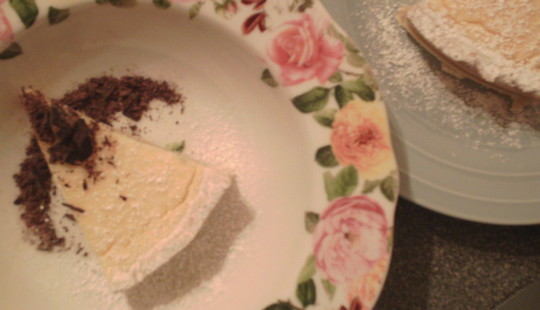There are quite a few keen cooks in Los Campesinos! and we all spend a lot of time talking about food when we are together: what to have for dinner (sushi sushi sushi!), what the venue will provide for us in the 'rider' (hummus, hummus, hummus) and the dark and dangerous delights of the service station snack.
Food is a great source of pleasure for all who find themselves far away from home, and whether it is the comfort of something familiar - emergency oatcakes and apples - or when we are lucky enough to be introduced to local specialities, highlights of which have so far included Mexican ceviche, a traditional Michigan City cookout (courtesy of Joe and Kellie, American tour manager and merch seller respectively and all-round fabulous eggs), duck confit or deep-fried pizza, I for one am always thinking about where LC!'s next meal is coming from.
But it's when we get home to our empty cupboards that I start to get sentimental about Mum and Dad's lentil soup and get my pinny on. Cooking is something you have to decide to make time for, whether it is ten minutes for perfect porridge or three days for cassoulet, and I think this is what makes it so special. The ideal menu would be something that takes at least a good afternoon of preparation and requires a strong dose of love and attention to succeed, but that is not too flashy or fast-paced. It should also have some wine in it so the cook gets a glass while he or she is slaving over a hot stove. I love to cook these dishes below at home for whoever I can tempt to come over and eat with me, and if any of you ever need a break from the stresses of real life on a Saturday afternoon I would highly recommend cooking this:
Aldo Zilli's Italian Sausage and Apple Stew with Polenta
For the stew:
a generous glug of olive oil
1 onion, chopped
2 garlic cloves, crushed
8 Italian sausages, or your personal favourite sausages
450g carrots peeled and neatly diced
1 cooking apple, cored, peeled and neatly diced
1 celery heart, neatly diced
2 leeks, chopped
1 glass white wine
150ml stock or water
1 bay leaf
black pepper
1 tin borlotti beans, drained
For the Polenta:
175 g ground polenta
1 ltr water
40 g butter
100 g parmesan cheese, grated
3 tbsp chopped parsley
Method:
1) Make sure carrots, apple and celery are all uniformly chopped to roughly the same size as the beans and admire your handiwork on the chopping board, before heating olive oil in a large, deep pan and adding all the ingredients up to the white wine. Cook for about ten minutes, stirring frequently until the sausages begin to brown.
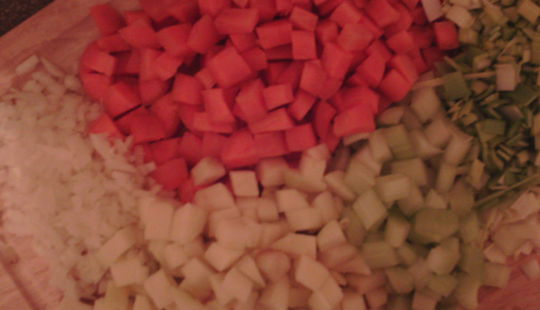
2) Add wine, stock and bay leaf and season with salt and pepper. Bring to the boil, before reducing heat to simmer for around 40 minutes until the vegetables are tender and the sausages are completely cooked.
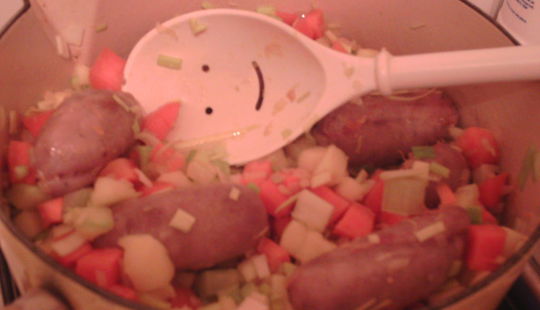
3) While the stew cooks, make the polenta. Be warned, this takes more time and effort than you might think and you also need strong arms or, even better, an enthusiastic assistant. You will be rewarded with a deeply savoury, comforting concoction. In another large pan, bring water and salt to the boil, reduce heat and gradually add polenta, whisking constantly.
4) Simmer for twenty minutes, stirring all the time until the grains are soft. The polenta will hiss and thicken considerably and start to come away from the sides of the pan.
5) Meanwhile, your stew should be bubbling away and smelling lovely and delicate. Add the borlotti beans ten minutes before the stew is ready to be served.
6) Stir the butter and parmesan into the polenta and season with more salt if required and lots of black pepper. Add the parsley.
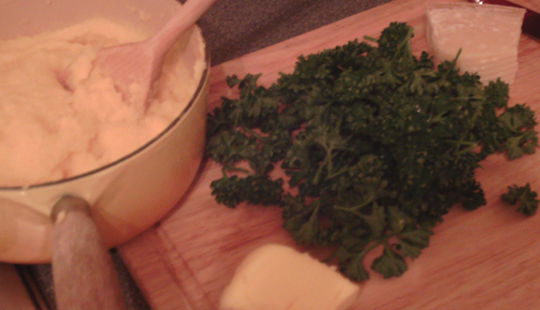
7) Serve immediately by putting a generous dollop of polenta into the bottom of each person's bowl and then spooning over the stew, making sure everyone has a sausage or two. And there you are, its fancy bangers and mash! Enjoy with rest of the wine.
Pudding is such a luxury. This recipe looks daunting but its actually really easy, and not much effort is required, other than being there to take it in and out of the oven.
Raymond Blanc's Lemon Tart
For the pastry:
120 g unsalted butter, cubed and softened
75 g icing suger, sifted, plus more for dusting
3 egg yolks
250 g plain white flour
about 2 tbsp water
For the lemon cream:
5 medium eggs
150 g icing sugar
juice of 2 or 3 lemons, depending on personal taste
the grated zest of the lemons
150 ml double cream, sour cream or creme fraiche
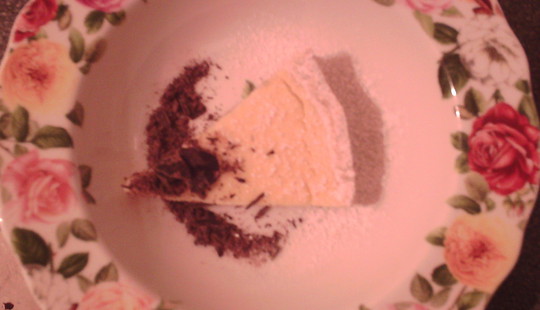
1) First, make the pastry. In a large bowl, cream the icing sugar and butter together with a wooden spoon until fluffy. Beat in two of the egg yolks.
2) Add the flour and rub into the batter with fingertips to make the texture of breadcrumbs.
3) Mix in the water and press the resulting dough together into a ball. Try not to overwork it from now on as it makes the pastry tough.
4) On a floured surface, gently knead the pastry for a maximum of 30 seconds.
5) Wrap in cling film and refrigerate for half and hour to make the pastry easier to work with later.
6) Meanwhile, make the lemon filling. Whisk together all the ingredients except the cream in a large bowl. Whisk the cream into this mixture and refrigerate until needed.
7) When ready, roll out the pastry on a floured surface into a circle about 4 mm thick.
8) Grease a 24 cm tart tin. I actually use a flexible synthetic cake tin because it is what I have and it is so easy to remove the tart when it is ready. You don't get the pretty wavy edge with this though, quel dommage!
9) Place the pastry on the tin and push it gently into the edges of the tin making sure it fits all the corners snuggly. Cut off excess pastry with a knife.
10) Prick the base of the pastry several times with a for and put in the fridge for half an hour. Preheat the oven to 180 degrees Celsius.
11) The pastry must be cooked on its own before adding the lemon cream. Line the pastry with foil and fill right to the top with dried beans. Bake for ten minutes , then remove the foil and beans and bake for a further twenty minutes.
12) Brush the pastry with the remaining egg yolk, beaten and return to the oven for one minute, to seal the pastry for the addition of the lemon cream.
13) Turn the oven down to 160.
14) Put the lemon cream mixture into a saucepan and heat gently for about ten minutes to speed up the cooking time of the tart. Stir constantly and carefully to prevent it from scrambling.
15) Pour this heated mixture into the pastry case and bake until just set, about twenty minutes.
16) Place tart on a cool window sill to cool for an hour, then remove tart from the tin and place on a plate.
Serve on its own in slim slivers, dusted with icing sugar, or with some grated dark chocolate. It also looks and tastes gorgeous with a raspberry sauce made by pushing raspberries through a sieve and adding sugar and lemon juice to taste. Frozen supermarket raspberries, then thawed for several hours at home are a great bargain for this.
